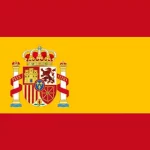The term SEO refers to a number of specific actions that can be taken to improve the chances of a search engine displaying a webpage in the top positions of search results. In this article, I will explain how my SEO agency in Spain handles all these actions.
By:
Created:
Updated:
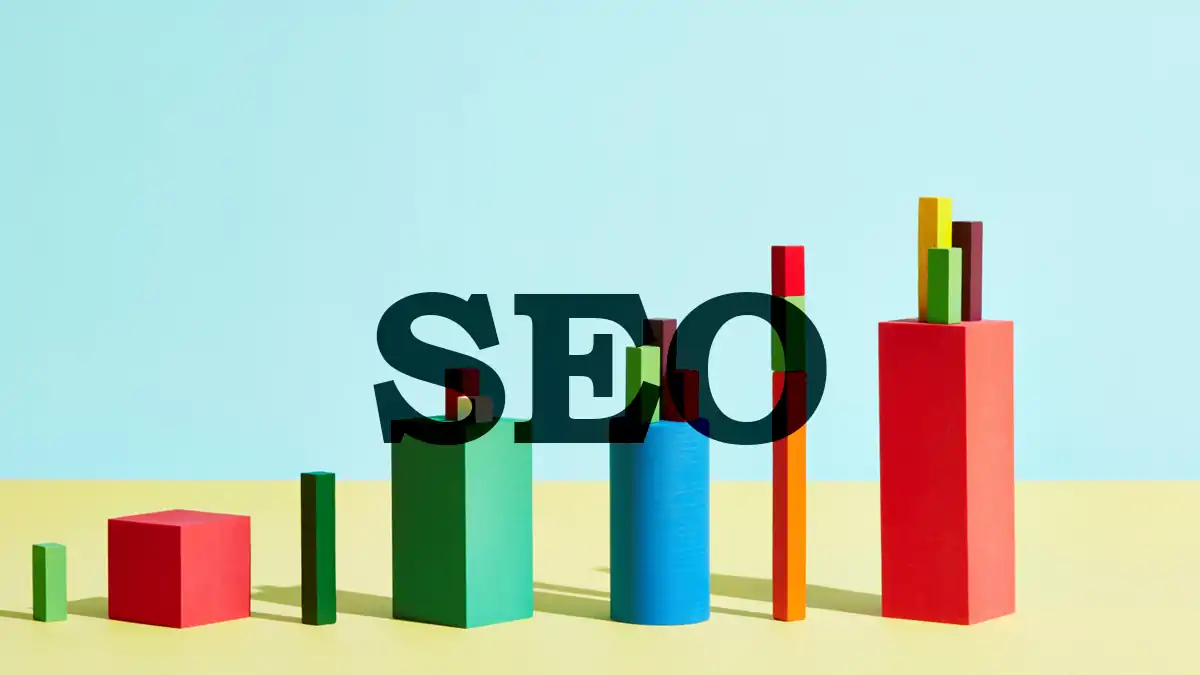
Additionally, I will provide you with real examples from Pablo Gracia (apablo.com, myself), to demonstrate that it indeed works.
Basically, I’m going to explain to you how I do it 😉
Looking for an SEO agency in Spain?
Send an email:
hola@apablo.com
Table of Contents
My SEO agency in Spain starts by the structure
Let me tell you about the most common mistake we make when we create a website or a blog for the first time.
This mistake is something we’ve all made, including myself!
The mistake is starting to write like crazy. It’s like building a house starting from the roof.
But of course, this happens because at the beginning, we don’t take into account the SEO rules.
When I made this SEO agency in Spain, I applied all these rules from the very beginning!
We’re talking about a matter of simple organization and using common sense, which as they say, is the least common of the senses.

So, if you’re going to do content marketing through SEO, don’t even think about starting to write before reading what I’m going to tell you.
I’m not selling you empty promises, keep reading and you’ll understand. I never start writing like crazy either.
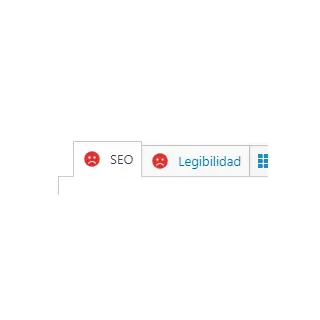
When working with this SEO agency in Spain, we’ll write with both the reader and the search engine in mind.
If you only think about one of them, you’re wasting your time.
You have to write about what people search for or could potentially search for.
Obviously, if your website is about a niche with low search volume, you’re not going to start writing about the top ten most adorable kitten videos of the year 😻
But you have to attract those few searches to your website.
So, you should always keep in mind that when you write, you’re addressing a reader’s query.
BUT don’t forget that the search engine is the one responsible for displaying your content.
That’s why it’s important to understand from the very beginning that an article is written for readers, but also for search engines.
Let me give you an example.
Writing for search engines to find the content 🤖
Imagine that I write a wonderful article that provides a solution to a common problem faced by my clients.
It’s a great article because my clients can find the solution on the internet, and I don’t have to explain it to them every time they call.
However, if I don’t write this text in a way that search engines can find it and improve my SEO, nobody will be able to find it.
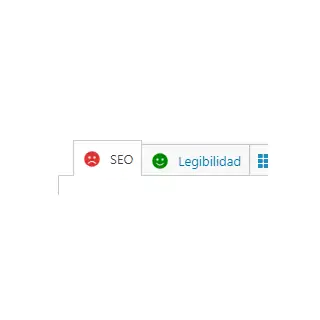
I work in an SEO agency in Spain, so you’ll have to bear with me. “Legibilidad” means “Readability”
It’s extremely important that you understand this: you write things for someone to find them, and someone finding them takes precedence over your writing style.
I say this because I’ve come across clients who complain because I had written a sentence that felt “a bit forced.”
They don’t understand that those words need to be there for the search engine to find them.
I told them, from this SEO agency in Spain: what do you prefer?
- Two forced sentences and visits
- A masterful composition and zero visits
Clearly, if you’re doing content marketing, visits are more important than the writing style.
When aiming for good SEO, articles must meet certain requirements for search engines to find them and clearly identify their topic.
If the search engine can’t find the article or doesn’t understand what topic it covers, it’s as if the text doesn’t exist.
I’ll explain to you further below the technical aspects that we follow in this SEO agency in Spain, when writing to ensure that a search engine finds our content.
Writing for readers to enjoy the content 👀
Let’s go back to the example of my wonderful article that provides a solution to a common problem faced by my clients.
But this time, let’s change it up.
In this case, my text is perfectly designed for search engines to find it.
However, it’s unappealing, poorly structured, has extremely long paragraphs, and is difficult to read.
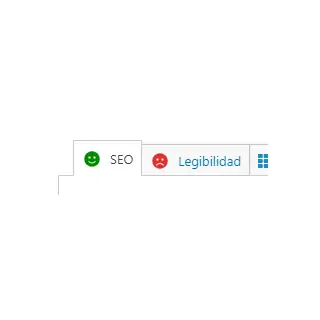
The article explains the solution, but it’s just too difficult to read!
In this case, even if the search engine has found and identified the article, it won’t rank well either.
The reason is that search engines highly consider how internet users interact with the content.
If they detect that it’s hard to read or doesn’t serve the user’s purpose, they tend to display it less in the search results.
Therefore, whenever we write an article, we must consider not only how it helps the reader. It also has to be accessible, engaging, and include images, infographics, and more.
The way readers interact with the content is crucial because if they have a negative user experience, the search engine may think that the content is not worthwhile or that there are better alternatives.
How my SEO agency in Spain achieves good SEO
To rank better, this SEO agency in Spain does a series of specific things that can be classified into two main categories:
Optimizing the website (what we call ‘on-site SEO’) and attracting the attention of other websites (what we call ‘off-site SEO’).

Don’t worry, it’s really easy, I promise.
- On-site SEO: What I can do directly on a website
- Off-site SEO: What I can try to have others do on their websites
I’m always very meticulous with what I do.
It can’t be done in just any way; attention to detail is crucial.
Exquisiteness and attention to detail are vital for success.
Whether I like it or not, my SEO agency in Spain has to make certain sacrifices to rank better.
Now let’s get into practical matters! 🛠️
I always start with what I can control: the client’s website.
On-site SEO
Working on on-site SEO involves performing a series of tasks on the website itself that improve how search engines perceive that website.
It’s as simple as it sounds, and many of these tasks can be done by anyone.
Some tasks are more complicated, but this SEO agency in Spain uses programs like WordPress and various add-ons that greatly facilitate the work.
Even for those who have never done it before.
I divide on-site SEO work into two categories: Content and Technical.
On-site SEO: Content
The most important part of on-site SEO is undoubtedly the content because it’s the essence of a website.
It includes the texts, images, and videos you find on that site.
Of course, the container (website structure) must be optimized, but the content is the foundation of everything.
In this section, I will explain how this SEO agency in Spain handles content.
Keywords
In SEO, keywords are the terms on which each article is based, corresponding to the text that an internet user enters into the search engine.
Here’s an example:

In this case, the keywords are “how to use a drill.” Since this is an SEO agency in Spain, pictures are in Spanish.
Do you remember what I told you at the beginning of the article?
The most important thing is to establish a structure and not write just for the sake of writing.
Keywords are what people search for.
That’s why I always choose the most common keywords in a field and use them in the content.
Ignoring the use of keywords is one of the most common mistakes when doing content marketing or starting a website.
Keywords cannot be repeated
Now, what I’m about to tell you is of vital importance: keywords cannot be repeated.
It is strictly forbidden to write two articles with the same keywords.
In this SEO agency in Spain, I always put myself in the search engine’s position: a person has searched for “best bicycles,” and my website has two articles with the keywords “best bicycles.”
Which one should it show? Which content is the right one? 🚴♂️
A website should have a single answer for each set of keywords, not multiple answers.
The search engine has to easily understand that if someone searches for “best bicycles,” this website has a unique answer to that query.

In this screenshot, Yoast is saying that you shouldn’t use specific keywords for two different articles.
Remember: SEO consists of writing articles for both readers and search engines.
So, if I come across two articles with the keywords “best bicycles,” I redirect the one with no visits and update the one with more visits with the content I redirected.
I prefer enriching existing articles with new content rather than writing new articles that duplicate keywords.
How to choose keywords
There are many paid tools that provide dozens of keyword suggestions, secondary keywords, and synonyms (AHREFS, MOZ, KeyWord Tool, and others).
These same tools also tell you which keywords are easier to achieve good SEO with, as they have less competition.
This SEO agency in Spain always uses them; they are fantastic.
But there are also free ways to find keywords that I often succeed with.
One of these ways is provided by Google completely for free, look:
Google Search Console
Google Search Console is a fantastic service, and it’s free!
Remember earlier when I told you that when I write, I also do it for search engines?
Well, search engines return the favor by giving me a way to know if I’m appearing in their results, how many times, in what position, and many other metrics.
It’s amazing.
But the tool that will be useful in this case is this, look:
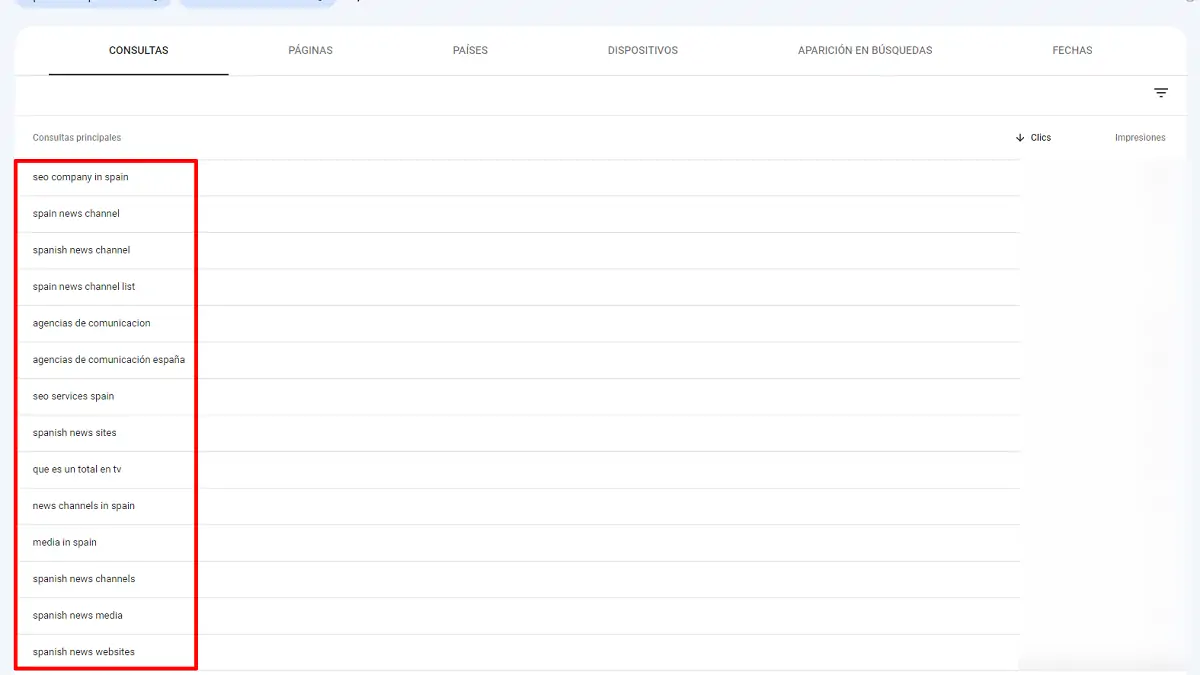
It’s in Spanish because this is an SEO agency in Spain.
But there, on the left side, Google tells me with which keywords I’m appearing in the search results.
So, when I see a keyword there that interests me and for which I don’t have an article yet, it’s a sign that there’s an opportunity.
I had a clear case with a client. There was a highly recurrent search query, and their website didn’t have an article targeting those keywords.
You won’t believe it, but I created a super article with those keywords and managed to triple the website’s traffic.
To this day, 70% of the website’s traffic comes through that article.
And mind you, I wrote it several years ago.

In summary, for me and my SEO agency in Spain, Google Search Console is a fantastic tool for finding keywords.
Oh, and by the way, there’s also Google Keyword Planner, which is free.
But I wanted to share the case of Search Console to show you that there are numerous ways to find keywords.
Lastly, I always pay attention to what my client’s competition is doing.
Search Intent
Search intent refers to the reason why someone performs a search on the internet.
Why are they entering those keywords? What is their motivation?
Search intent is important in SEO because the content I write in my SEO agency in Spain needs to align with the purpose of the search 🔍
There are four types, take a look:
Navigational ⛵
When we search for a specific website, we type in the name of the website.
For example, to find the Wikipedia website, we often type “wikipedia.”
Essentially, the user is looking for a homepage.
Informational 📰
When we search for information on a specific topic.
It often starts with words like “how to” and “what.” For example, “how to change a broken pipe.”
Essentially, the user is seeking a solution to a problem.
Commercial 💯
When we want to compare products we’re interested in buying.
We usually use words like “review,” “comparison,” “features,” etc.
For example, “fibre internet comparison.”
The user is browsing options but not yet ready to make a purchase.
Transactional 💰
When we go online with the intention of making a purchase.
We typically use words like “buy,” “offers,” “price,” etc. For example, “buy vacuum cleaner.”
The user is determined to make a purchase.
Search intent is crucial in deciding which keywords to use at any given time.
For example, my homepage corresponds to keywords that match its name (navigational intent).
SEO: Adapting the Content
At this point, you should have understood what article keywords are and the user’s search intent when they find content.
Now comes the fun part 😊
I distribute the keywords a minimum number of times throughout the text, as well as in specific places.
But beware: you shouldn’t just randomly insert the keywords everywhere, I can see you doing it!
To determine how many times and where the keywords should appear, I use an excellent application that you may be familiar with: Yoast.
If you use WordPress and haven’t installed it yet, you should do it right away.
Yoast tells me, in a very simple and mechanical way, what I need to do for search engines to find my content with specific keywords.
Many people have Yoast but don’t know how to use it effectively.
Yoast tells me the changes I need to make to improve the SEO of my article.
But this SEO agency in Spain’s job is not done until all the points are green:

Always all the bullets have to be in green. There are still some points in red, right?
The first thing I do is write the keywords in the designated space.

I’m sorry pictures are in Spanish, this means “how to do yoga”.
Then I review the things that this application asks of me:
Title: Important in SEO
The title is the set of words that identifies an article.
It’s one of the most important aspects when it comes to SEO.
It not only informs the reader about the article’s topic but also holds significant importance for search engines when indexing it.

- It should contain the keywords, preferably at the beginning of the title
- It must be clear and describe the content of the article
- It should be short to fit along with the website’s name (otherwise, search engines will display it with ellipsis)
- I take the opportunity to make my headline stand out from the competition
- It is forbidden to have two pages with titles that are too similar
Meta Description
The meta description is a brief text that describes the content of an article. It’s crucial when working on SEO.
It appears just below the title in search results.
It’s important to provide a well-crafted description rather than relying on the search engine to generate one automatically.

- It should contain the keywords
- It should be enticing, yet informative in tone
- Its length should range between 130 and 150 characters
- It is prohibited to have two pages with the same meta description
URL (Article Address)
The URL is a unique string of characters that identifies each page and other resources on the internet.
To find a page, we can either type the URL directly or use a search engine, which will provide us with a link to that URL.

- It needs to contain the keywords
- It should be short, without spaces or strange symbols
- It is recommended to separate the words with hyphens
- Having two pages with the same URL is not possible
- The part of the URL that identifies each article within the same website is called a ‘slug’
H2, H3, H4, and Subsequent Headings
The H headings are the headings of each section that divides a text.
They are used to organize an article into multiple subsections, making it easier to read for both users and search engines.

- Several of them should include the keywords
- I use them to organize and structure the text in a table of contents or index
- The H1 corresponds to the main title, from which several H2 titles can derive. Each H2 title can have several H3 titles, and so on
- There can only be one H1, but there can be multiple H2, H3, etc., titles
- They should not be linked (except within the same article)
Text that improves SEO
In SEO, text is the resource composed of words that provide an answer to an internet user’s query and aligns with their search intent.
It is the most important content on most web pages, as language is the simplest and most flexible form of communication.
This SEO agency in Spain always strives to be creative to achieve differentiation, as long as it doesn’t compromise clarity or the structure of the document.
- The length of the document should be appropriate for the topic being addressed: neither too short nor filled with unnecessary content, with a minimum of 400 words and, if possible, exceeding 1,000 words ✍️
- The text must be useful and relevant to the keywords
- The first paragraph of the text should contain the keywords
- Keywords should appear throughout the text with a density greater than 1% and should be well distributed throughout the document
- Avoid long sentences and compound sentences to facilitate comprehension: no more than 20 words per sentence
- The text should be well-structured, using H2, H3, etc., headings for each idea
- There should not be more than 300 words between each block of headings
- It is recommended to include a table of contents or index with links to each section at the beginning of the document
- The text should be free of spelling errors
- I use common writing resources such as bold, italics, quotation marks, numbered lists, and others
- I always proofread the text before publishing it to correct any possible errors
- My SEO agency in Spain takes the opportunity to invite the reader to take an action that interests my clients: leave a comment, subscribe to the newsletter, make a purchase, rate the content, and anything else I can think of. This is usually done in an imperative tone
Images
Inserting images and infographics is one of the most interesting actions to make an article more attractive and improve its web SEO.
All graphics used should be related to the article’s topic and should add information to it.
Remember that search engines have specific sections for image search.

In CMS platforms like WordPress, it is very easy to include an image description using the ‘alt text’ tag option.
- If possible, the size of the images should not exceed 100kb in their original form.
- I use keywords as the file name for one of the images.
- It is important to write descriptions in all ‘alt text’ tags.
- The ‘alt text’ description of some images should include keywords.
- These descriptions should be short and simple.
Internal Links 🔗
Internal links are hyperlinks that point to other pages and articles within the same website domain.
They are important for SEO because they encourage readers to continue reading a website while also assisting search engines in indexing the content.
- All important pages of a website should receive more than one internal link from other pages and articles.
- I always strive to have the linked text contain the same keywords as the page it is linking to.
- The words surrounding the linked text are used by search engines to gain context, even if they are not part of the actual link.
- It is important to regularly check for broken links on the page.
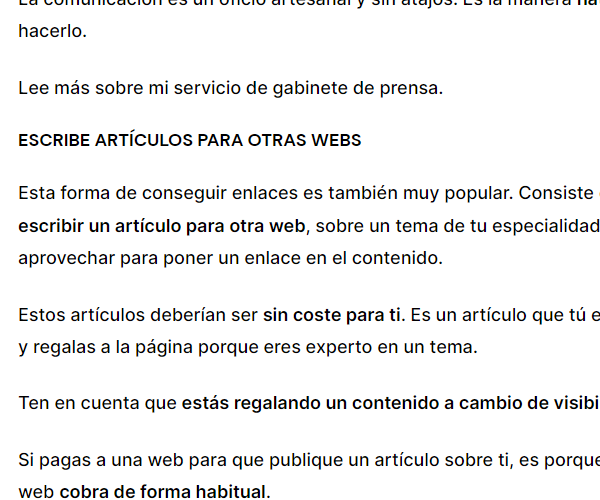
External Links
External links are hyperlinks that point to other pages and articles from a different website domain.
They are important for SEO because they act as a source of authority that supports the content.
- It is recommended to link only to authoritative sites or those that truly deserve a link
- I never use external links in parts of a text that correspond to keywords of other articles on my website
- Websites that place links in exchange for money are at risk of receiving penalties in their SEO
Onsite SEO: Technical Aspects
The technical aspect of onsite SEO is of great importance as it governs the functioning of a website.
If a page is slow, gets stuck, has heavy code, or problematic plugins, its SEO can be seriously affected.
So, here I’m going to provide you with a series of tips that I usually consider in this SEO agency in Spain.
Make sure that a website’s visibility is not compromised by technical issues.
Choose an appealing domain
The domain is the unique set of characters that identifies a website on the internet.
It is the first part of a page’s URL and can end with ‘.com’, ‘.es’, ‘.net’, etc.
I always recommend choosing a domain with a ‘.com’ extension.

I’ll give you some ideas for choosing a domain:
- It should be short
- It should be easy to type
- It should be easy to remember
- You can use keywords
- It can include a geographic location
- Avoid using hyphens, numbers, and special characters
- It must be available
It has been proven that domains that meet these requirements receive more visits.
Another consideration is whether you will use the ‘www’ in your website addresses.
The use of ‘www’ is becoming less common nowadays.
However, it has been confirmed several times that it has no impact on SEO. But what if it has an impact in the future?
In any case, I personally prefer URLs without the ‘www’.
However, this decision needs to be made from the beginning.
Making the change when your website is already up and running can be a real headache.
The reason is that if I make a change and remove the ‘www’, then I have to ensure that all the content is redirected properly.
And since it doesn’t have a direct impact on SEO, I don’t see why I would get myself into such a mess
But yes, if you’re starting a website from scratch, I believe it’s best to do it without the ‘www’.
Hiring a reliable web hosting service
Web hosting is the service where all the content of a website is stored.
It’s like a hard drive connected to the internet where my website resides.
Any device with internet access can connect to this hard drive and visit the website.
It’s important to hire a professional web hosting service so that any potential performance issues don’t affect the SEO of your website.
SSL
SSL is a digital standard that certifies the authenticity of a website’s identity.
This is essential, but believe it or not, there are still many websites that don’t have it.
You can tell if a website has it because its URL will show ‘https’ instead of ‘http’.

Any hosting service will provide you with a free SSL certificate.
Most website platforms (such as WordPress) have an easy solution to properly integrate SSL.
When starting a website from scratch, my SEO agency in Spain doesn’t publish anything until I have the SSL certificate.
This way, I avoid having to redirect pages later on.
If you’ve already started a website without SSL and realized that you don’t have it, you’ll need to find a solution to redirect the ‘http’ URLs to ‘https’.
Otherwise, you will have issues with mixed content that will negatively impact the ranking of your website.
Speed
The loading speed of a web page is a crucial statistic for improving SEO.
The reason is that if a web page takes too long to load, the bounce rate can increase.
Google may perceive the page as uninteresting and potentially display it less in the search results.
To check if a web page is slow and receive recommendations, I use the PageSpeed Insights tool.
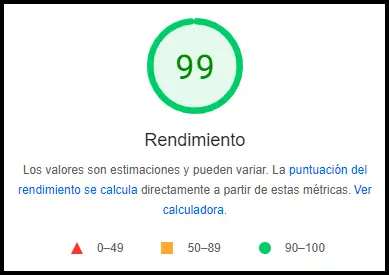
On that website, you’ll find concrete ideas on what you can do to improve your website’s performance.
There are many other websites and applications that provide similar information and advice for improving your website’s speed.
One common mistake in the beginning is uploading images that are too large in file size.
It’s better to resize them before uploading, and you can even do this with tools like Paint 😛
Another effective approach is to adapt your website to AMP.
What is an AMP webpage?
AMP (Accelerated Mobile Pages) are web pages optimized with a technology developed by Google.
As the name suggests, AMP is designed to improve the performance of web pages on mobile devices 📱
To have an AMP webpage, certain parameters need to be met, which can sometimes be a bit restrictive.
Again, when starting a website from scratch, I install an AMP plugin as soon as I have the SSL certificate.
Almost automatically, my website will have better performance on mobile devices.
However, I need to consider the AMP parameters when creating content for the website, as they can be somewhat restrictive.
When wanting to make an existing website AMP-compatible, it can be more challenging: many installed plugins and applications may not be compatible.
Many people have faced difficulties when converting their existing website to AMP.
But if a website is new, I strive to do it right from the beginning and make it AMP-compliant right away.
I check if a page is AMP-compatible using the AMP Testing Tool.

Responsive Design
In recent years, the term “responsive” has become popular.
It basically means that a website should look good on all devices: computers, tablets, mobile phones…
Currently, very few web resources lack responsive design compatibility. In fact, it is often implemented automatically.
However, when creating content or making modifications on a website, it’s important to consider responsiveness.
The content should be visually appealing on all devices.
In Google Search Console, there is a section where you can check if your page is mobile-friendly.
It even warns you about issues such as font size being too small.
A page with design incompatibilities may be penalized in search engine results.
Let me give you a clear example: Have you ever wondered why many web pages only use the central space for content?
Even the content I create in this SEO agency in Spain uses only the central part.
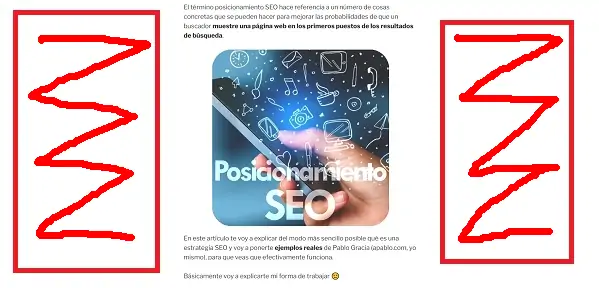
Visualized on a monitor, it may appear that there is a lot of white space on the sides. Have you noticed this?
With all the space available on the screen, why don’t they fill it?
Well, that’s because the content design is optimized for mobile phones, which are typically viewed in a vertical orientation.
This ensures that there are no design incompatibilities.
Google Site Map
A website sitemap is a file that lists the URLs of a website.
It serves to inform search engines about the content you want them to include in their results.
For a small website, a sitemap is not necessarily required.
However, having one can still improve SEO.
The larger the website, the more beneficial it is to have a sitemap.
Sitemaps support various formats, including the basic .txt format (even with Notepad!).
If your website is large, you may need a plugin to automatically generate the sitemap.
For small websites, you can create the sitemap manually by copying and pasting the URLs into a .txt file.
Once you have the sitemap file, you can upload it to your website and provide the link in Google Search Console (or any other search engine).
It is important to have a sitemap, although it may not be necessary if your website has good internal linking.
Adding Schema Markup
Schema markup consists of invisible references that provide search engines with additional information about a website.
Search engines sometimes use this structured data to display specific results for certain queries.
The most common example is recipes. For example:
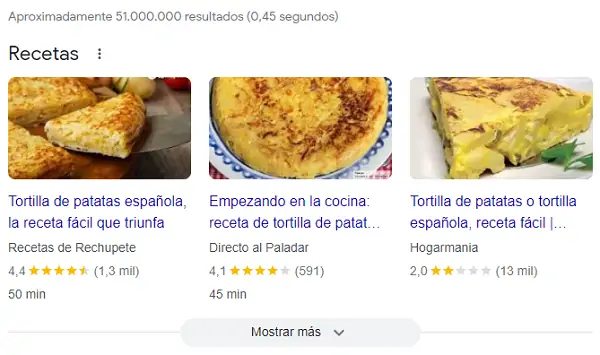
Of course, this being an SEO agency in Spain, I had to choose Spanish food for the examples 😜
It’s like the website provides the search engine with additional information.
For example, the cooking time of a recipe.
There are many variables that can be declared, invisibly.
Basically, a typical reader is not aware that it even exists.
There are several ways to do it: by writing the code directly or using one of the many plugins available.
Even Google offers a free Structured Data Markup Helper that automatically generates the code for you. I’ve used it in my SEO agency in Spain and it’s really cool.
Filling in the Schema fields can be a bit tedious.
As if finding keywords, writing the article, and optimizing it for SEO wasn’t enough, right?
Some people claim to have seen significant growth since they started using Schema markup.
Others say they haven’t noticed any difference.
It all depends on the specific case.
On the official Schema website, there are numerous tags that I usually use.
Offsite SEO by this agency in Spain
We have covered the part that we can control (the website).
Now let’s talk about how we can improve SEO with strategies that we have less control over.
This part of the article is a bit controversial.
I’ll explain why later, since my SEO agency in Spain has its own opinion 😇
But at first glance, I can tell you that I disagree with some suggestions from “experts.”
What is Offsite SEO?
The term “offsite” SEO refers to all the external factors that influence the ranking of a website, not related to the website itself.
The most popular of these factors is obtaining backlinks from other websites.
Backlinks
Imagine that a reputable news outlet links to a specific website in their content.
Since this media outlet is reputable and is encouraging its readers to visit a website, search engines understand that the linked website must be important.
That’s why a website that has been linked by a reputable media outlet tends to go up in search results.
At first glance, it sounds logical, right?
Well, from early on in the history of the internet, people started paying for backlinks on other websites.
And Google got really mad.
The search engine said it would not allow its search results to be manipulated in that way.
It started imposing harsh penalties on websites that bought and sold backlinks.
Some websites were even deindexed.
There were cases of companies buying backlinks for their competitors.
They did it with the intention of getting the search engine to penalize their competitors.
To prevent this, Google softened its penalties.
Instead, it simply ignores suspicious links that were likely bought.
This means that buying backlinks could be a waste of money.
Furthermore, such practices could violate several laws. I explain this in an article on whether buying links and backlinks is legal or not (in Spanish).
On the other hand, there are many places where you can place links to your website for free: forums, comment sections, listings, and even websites created for publishing free articles.
Well, it’s a way to get free links. However, Google will most likely ignore them or provide very little help.
But you have to be careful. Some of these websites are marked as spam. Any SEO agency in Spain and all over the world should know about this.
I told you this topic has its controversies! 😛
Types of Links
All links can be classified into three basic types, including those on your own website. They are as follows:
Dofollow
A dofollow link is a regular link, plain and simple.
The term “dofollow” means that we want the search engine to “follow” this link.
It’s like telling the search engine that this link is a regular one and should be considered when crawling the web.
The search engine will most likely do so, and this way, it will improve the authority and SEO ranking of the page it points to.
All the links I usually include are “dofollow.”
Nofollow
A nofollow link is a link in which we tell search engines not to follow it.
Hence the term “nofollow.”
It is used for various reasons, such as when we are unsure about the security of the website it points to or when we have been paid to include the link.

Average visitors are usually unaware of whether a link is “dofollow” or “nofollow.”
Although search engines don’t follow these links, they still hold value.
Instead of crawling the link, Google examines the context in which it appears.
It pays attention to the surrounding words of the “nofollow” link.
So we should never underestimate the significance of these types of links.
Sponsored
Lastly, a sponsored link is a link placed in exchange for payment.
These links don’t directly improve SEO, but search engines take them into account to at least acknowledge the existence of the website they point to.
Domain Authority (DA)
Domain Authority is a score calculated based on various technical parameters. It is used to determine the authority of a website on the internet.

It’s essential to be cautious because Domain Authority is not a metric provided by Google.
An SEO agency in Spain or anywhere else won’t be able to know what the search engine thinks.
It is calculated by external websites based on their understanding of what search engines should consider when assessing a website’s authority.
While these calculations may be reasonably accurate or close, it’s worth noting that I’ve seen cases where websites with minimal authority still ranked well for specific keywords.
So, everything is relative 😊
How to acquire backlinks?
There are many ways to acquire backlinks on the internet, but the most important thing is to be honest and strive for natural link building.
You can try to obtain any backlink as long as:
- The website is safe
- You don’t pay for it
- It apperas naturally

While you meet these three requirements, you can actually do whatever you can think of.
I don’t recommend paying for a link in any case.
Remember that I disagreed with the recommendations of some “experts”?
I say this because on the internet, there is talk of paying to publish an article with a link as if it were nothing. Like talking about the weather.
And in my opinion, it’s not something to take so lightly.
Send press releases
Sending press releases to the media can help with your web positioning if they publish something about your website.
Remember that media outlets are important websites that Google holds in high regard.
If you send them a good story, they might be interested in your project. It’s difficult to get published, but not impossible.
However, keep in mind that press releases are not sent to be published as is.
In some cases, they may be copied and pasted, but this is not the norm.
And a piece of advice for you: stay away from press release distribution platforms that guarantee publication.
Google is well aware of these platforms, and many of them are not even indexed.
Communication is a craft that requires effort. There are no shortcuts. This is the natural way to do it.
Learn more about my press office service.
Write articles for other websites
This method of obtaining backlinks is also very popular.
It involves writing an article for another website on a topic related to your expertise and taking the opportunity to include a link in the content.
These articles should be free of charge for you. It’s an article that you write and offer to the website because you are an expert in a particular subject.
Keep in mind that you are providing valuable content in exchange for visibility.
If you pay a website to publish an article about you, it’s because that website charges for such services.
They typically publish articles in exchange for money.
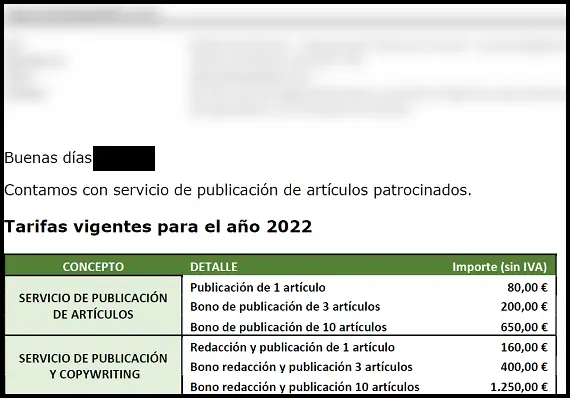
And since they do it regularly, search engines have likely already detected it.
Therefore, a link on that website may not be very useful for improving your SEO ranking.
Nevertheless, if the opportunity arises, make sure that both the article and the link are integrated naturally.
Today’s machines are capable of understanding texts and can distinguish promotional content from editorial content 😉
Use news aggregators
A news aggregator is a website where anyone can submit a link to another article.
User interactions and the website’s automated editing process determine which content makes it to the front page.
Perhaps the most well-known example is Reddit.
There was a time when news aggregators were used to artificially create links.
However, this tactic hasn’t worked for years.
If the content is deserving, it can help drive traffic (which also improves SEO).
But you need to be careful about the type of content and the frequency with which you submit links.
Aggregators take these factors into account, and you could end up being marked as spam.
That’s why you shouldn’t force it and try to be as natural as possible.
Yellow Pages and directories
This is a straightforward way to obtain links, although they have little value.
Having links in the Yellow Pages or various directories only serves to let search engines know that a page exists.
They have little value because anyone can add them. But well, at least they’re there.
Take advantage of also listing your business in local directories.
I’ll reiterate the advice I’ve been giving you: don’t pay for them, be careful where you place them, and don’t add them all at once.
Let it happen naturally, slowly, without forcing it.
Add them over the course of several weeks 📅
Obtain good reviews
Just as you can list your business in directories, you can also ask your customers to leave reviews on those same pages.

Indeed, having good reviews on external platforms also influences SEO ranking.
If you’re going to encourage reviews, try to avoid receiving too many five-star ratings all at once.
It’s better for them to appear naturally over time.
Social media
Creating profiles on social media platforms can also improve the SEO ranking of a website.
Obviously, when creating a social media profile, it’s important to include a link to the website.
However, doing so won’t significantly boost its ranking in search engines.
Similar to most directories and platforms where you can add a free link, this will mainly help search engines become aware of the website’s existence.
The number of followers on a social media account also doesn’t have much influence (except in some cases), as having a large number of followers doesn’t necessarily mean they are actively engaged.
Just like with news aggregators, having social media presence can help drive traffic to a website.
To do so, you need to actively publish content on these social platforms.
Visits and interactions with a website are increasingly influential in its ranking.
That’s why it’s important to attract readers who can engage with the content.
Learn more about my social media management service.

Make friends and improve SEO
It may seem like a strange piece of advice, but getting to know other people with similar interests can help you.
You can mutually link to each other and share content.
However, it’s important to do this with people whose websites are secure, without any financial exchange, and in a natural way.
Don’t go overboard linking to each other with a bunch of people because Google specifically mentions this in its spam policies.
Analysis of Results
The work of SEO can be assessed by analyzing data such as traffic, impressions, CTR, and other metrics.
It’s important to keep in mind that SEO is a long-term process.
It takes time, but it’s crucial to monitor and track results on a monthly basis to make necessary adjustments.
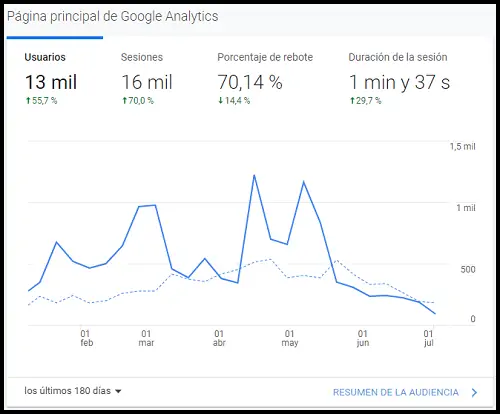
For a simple analysis, you don’t even need a paid SEO platform. Some of this SEO agency in Spain’s clients only demand Google Analytics and Search Console results.
Traffic and Organic Visits
Undoubtedly, it is the most important metric to determine whether an SEO strategy is working or not.
If you see improvements in the records of organic visits in Analytics and Search Console, it means that you are doing a good job.

We need to identify and categorize the visits: people who arrive at the website through social media are the result of the social media strategy, not SEO.
In the end, it is true that everything is connected. But a rigorous analysis will help us understand what works and what doesn’t.
Impressions in search engines
The number of impressions for a keyword determines whether Google has understood what a web page is about or not.
Search Console directly tells us for which keywords a website is being shown.

And not only that, but it also provides information on how many times a page has been shown in the search engine as a result of a specific query.
Impressions come before clicks.
Without impressions, there are no organic visits.
That’s why it’s important to study whether you have impressions, if they are increasing or decreasing, and for which keywords.
Click-Through Rate (CTR)
The Click-Through Rate is a statistic that measures the number of clicks received relative to the number of impressions.
It is measured as a percentage.
If a page has a 1% click-through rate, it means that out of every 100 times it is shown by a search engine, it receives one click.

If a page has many impressions but few clicks, it is likely that the content is not of interest to internet users.
Improving the Click-Through Rate (CTR) is important because it is a clear signal that the content is performing well.
The title and meta description also play a significant role in this. Articles with controversial headlines serve as click bait to improve the click-through rate (CTR).
Authors who use these headlines do so to enhance the click ratio.
External backlinks
Monitoring external site links is important to assess the success of offsite SEO strategies.
It is crucial to know where these links come from and if they originate from secure and authoritative pages.
Conclusion of this SEO agency in Spain
In conclusion, a content marketing and SEO strategy requires careful planning.
You need to work on your own website, both in terms of content and technical aspects.
Additionally, attention must be given to external factors that can improve your website’s visibility on the internet.
Send an email to my SEO agency in Spain, and we will work together on your website’s SEO: hola@apablo.com

